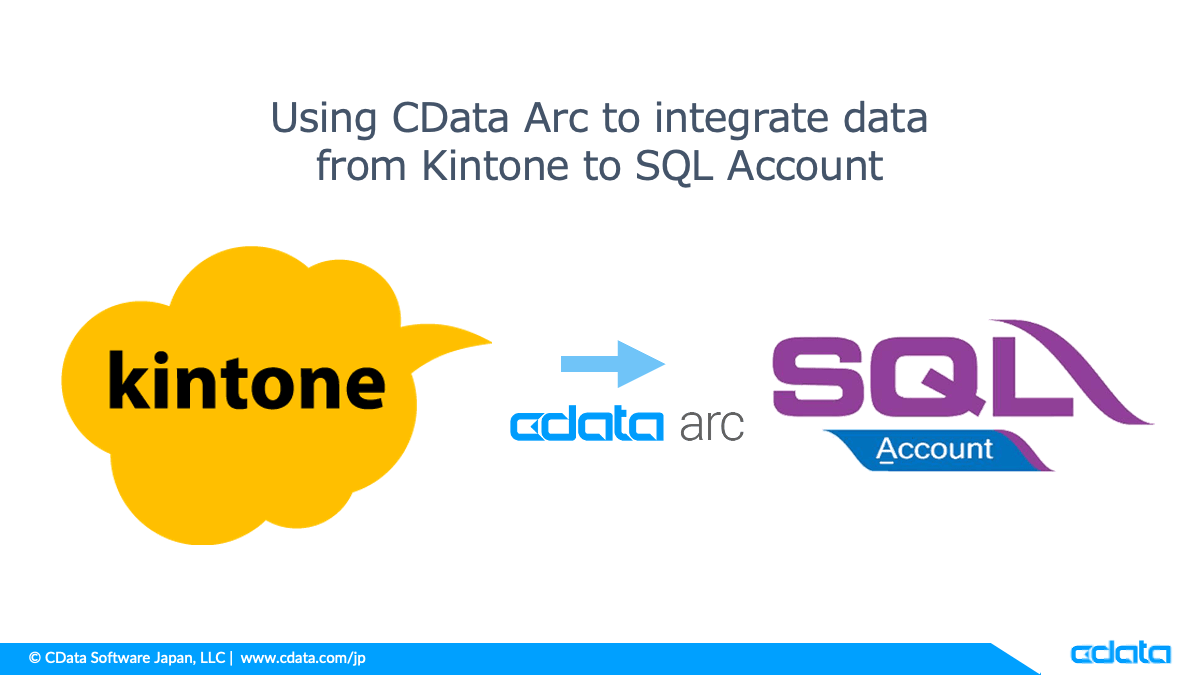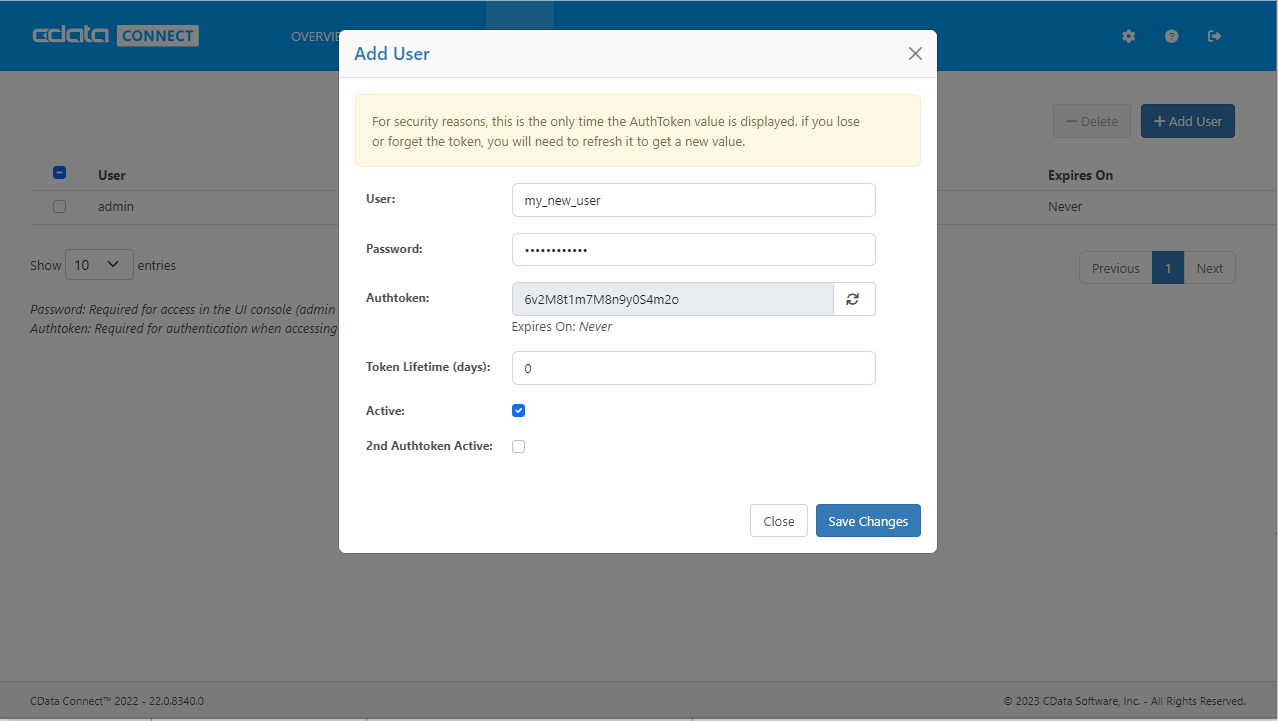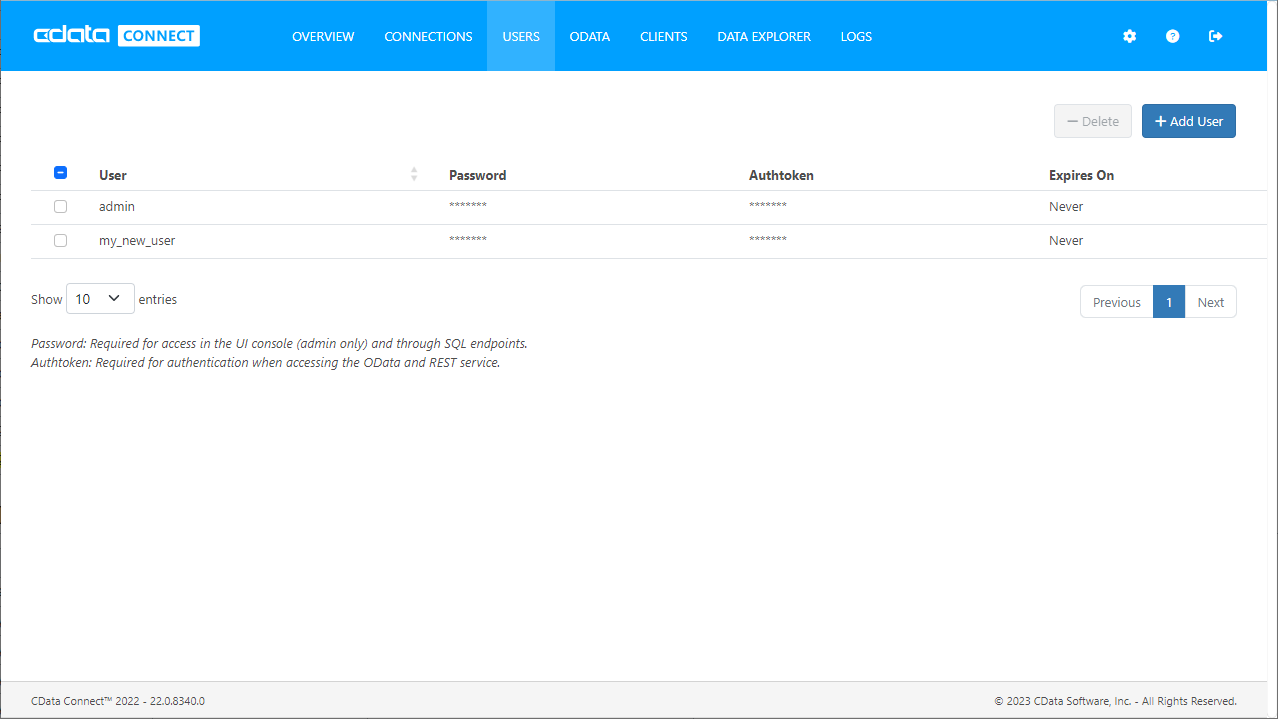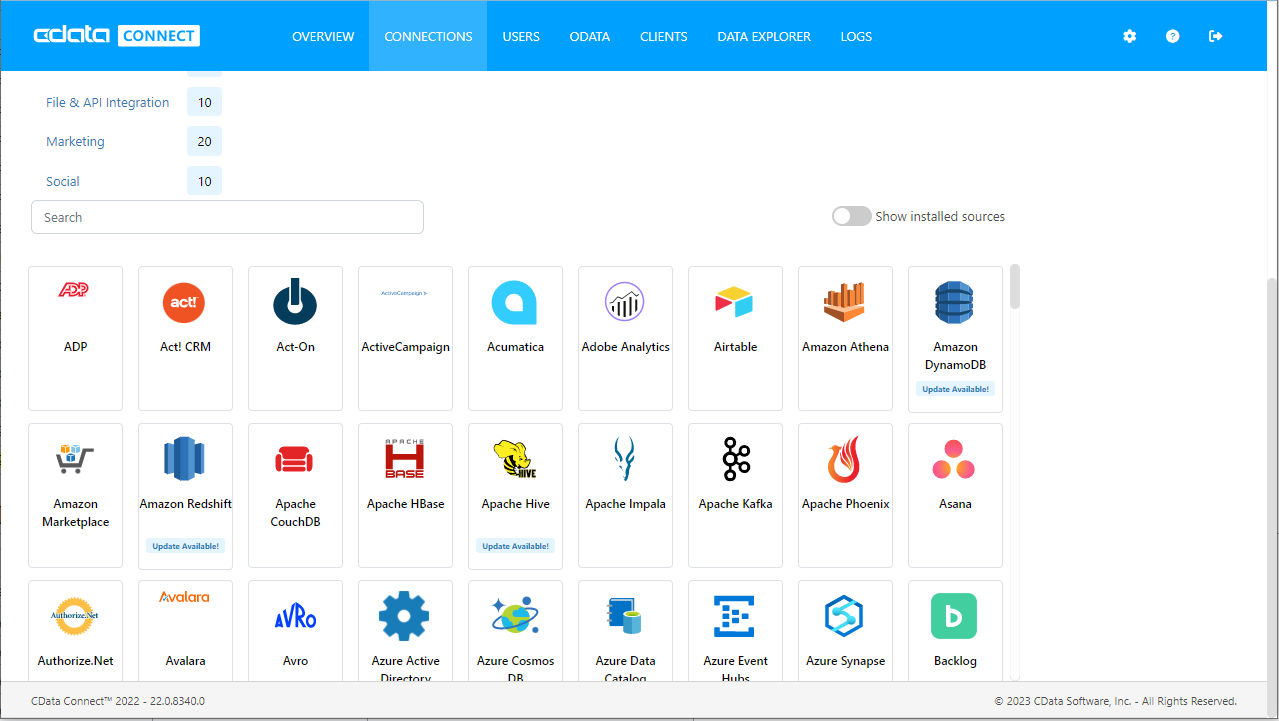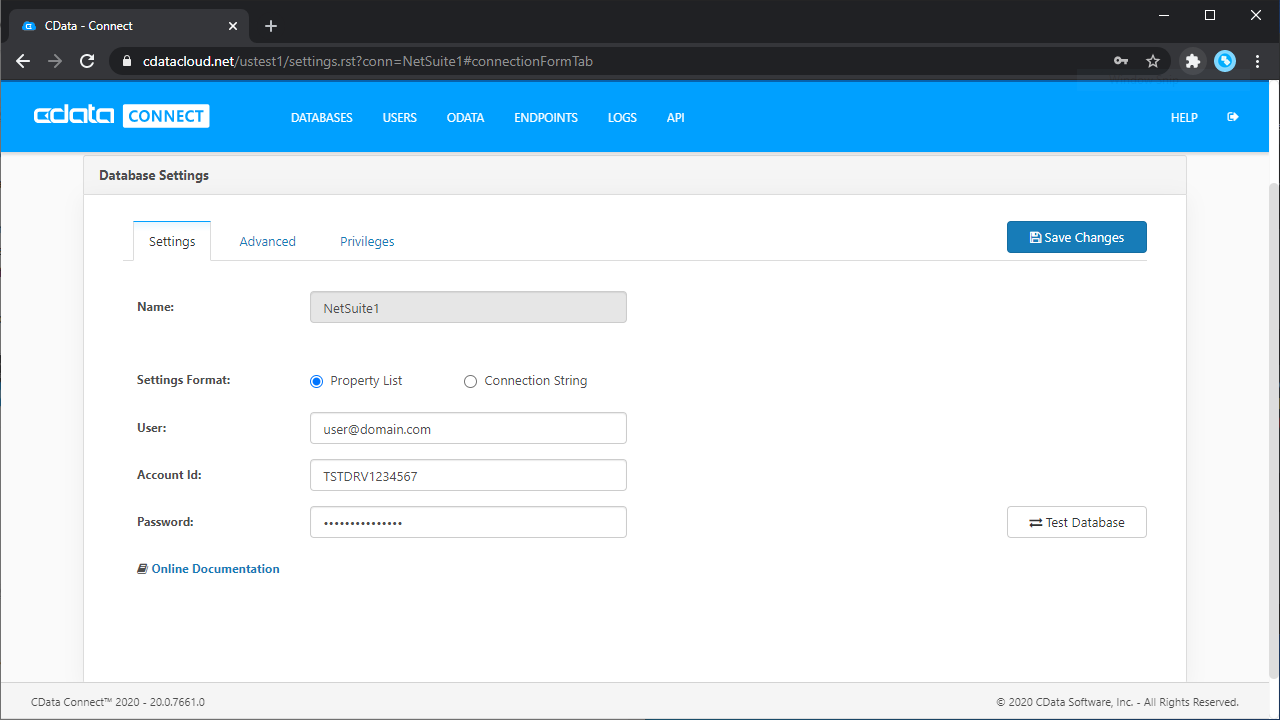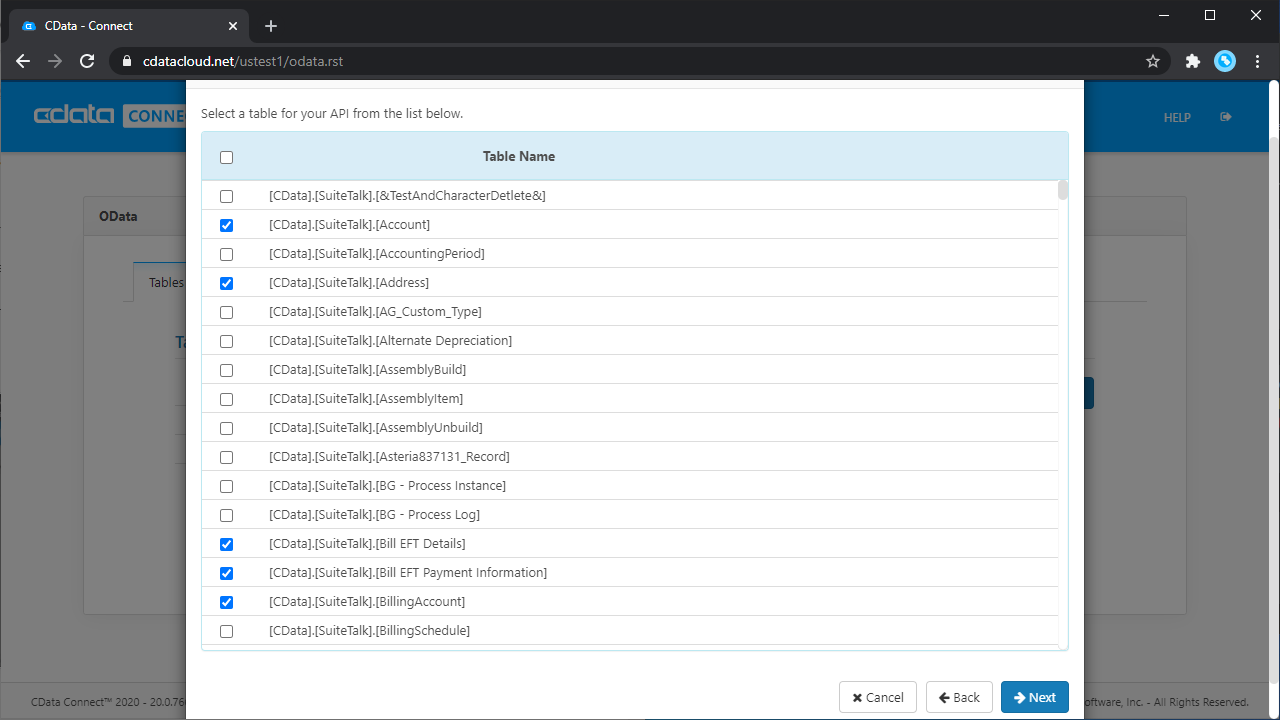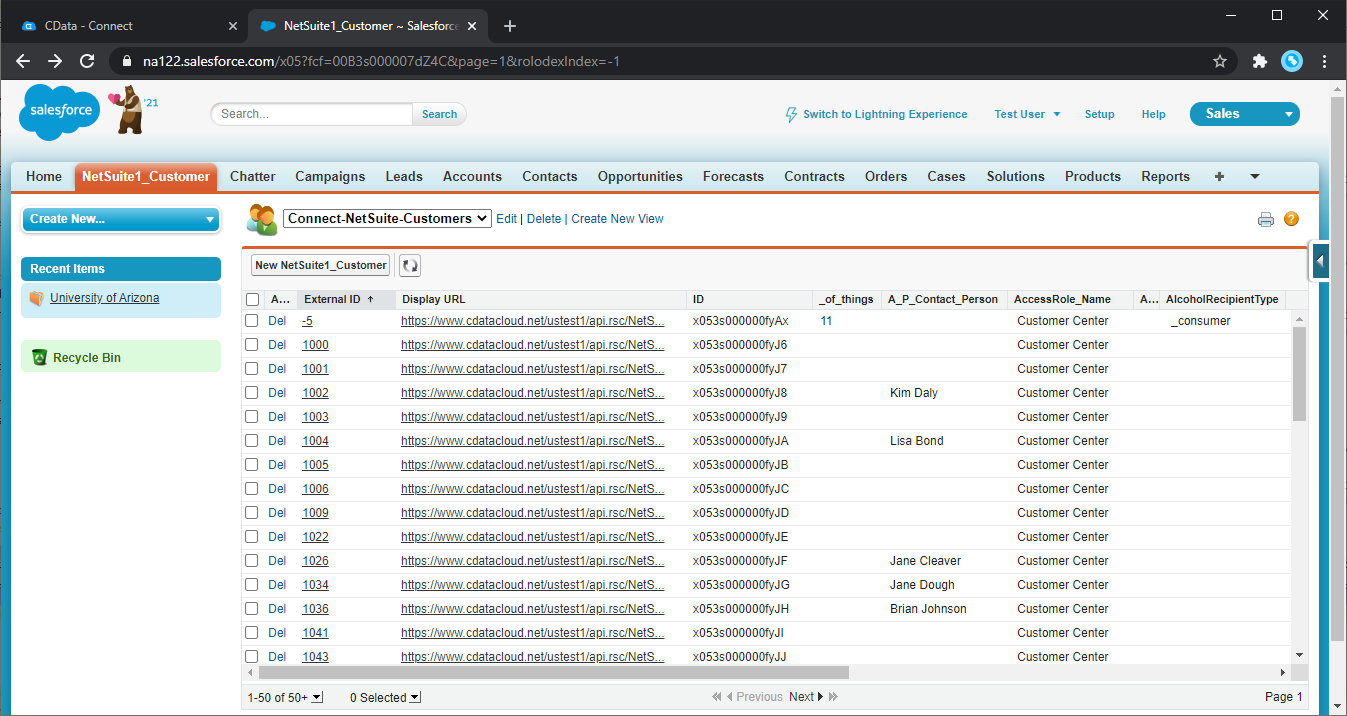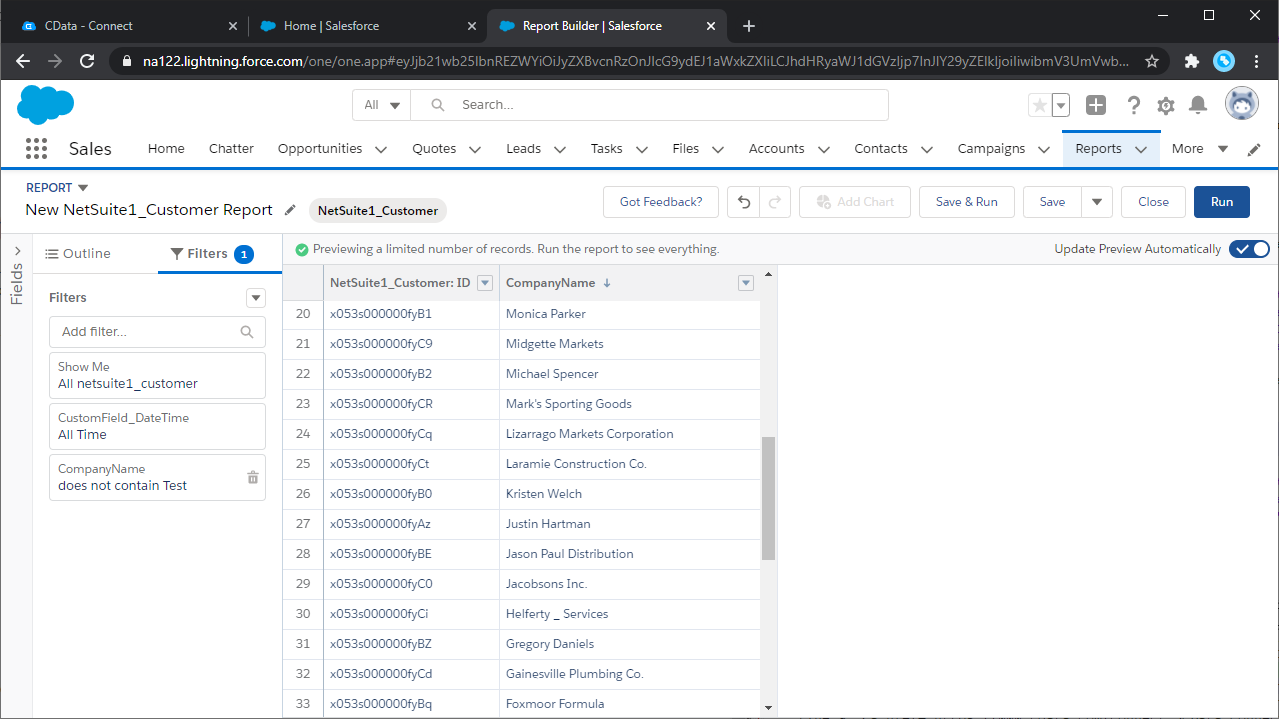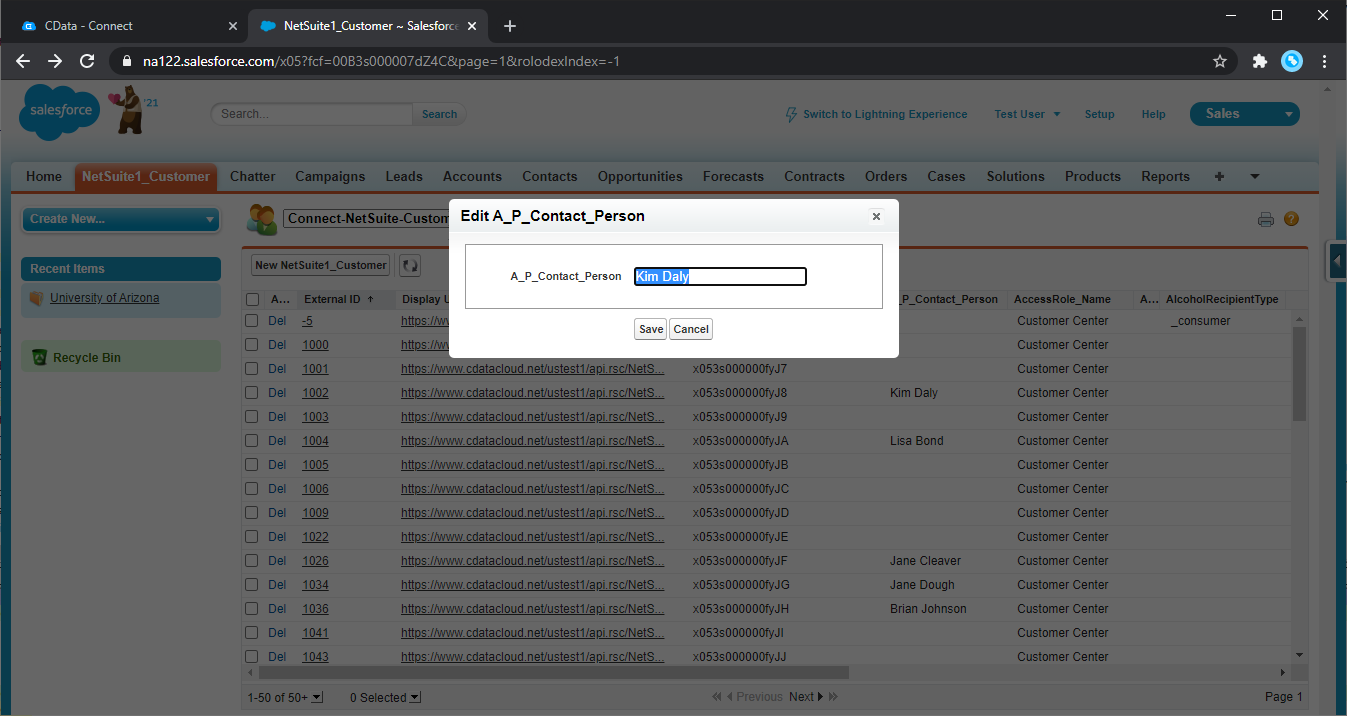Discover how a bimodal integration strategy can address the major data management challenges facing your organization today.
Get the Report →Edit and Search External FTP Objects in Salesforce Connect
Use CData Connect Server to securely provide OData feeds of FTP data to smart devices and cloud-based applications. Use the CData Connect and Salesforce Connect to create FTP objects that you can access from apps and the dashboard.
CData Connect Server, enables you to access FTP data from cloud-based applications like the Salesforce console and mobile applications like the Salesforce1 Mobile App. In this article, you will use CData Connect Server and Salesforce Connect to access external FTP objects alongside standard Salesforce objects.
Configuring Connect Server
To work with live FTP data in Salesforce Connect, we need to connect to FTP from Connect Server, provide user access to the new virtual database, and create OData endpoints for the FTP data.
Add a Connect Server User
Create a User to connect to FTP from Reveal through Connect Server.
- Click Users -> Add
- Configure a User
![Creating a new user]()
- Click Save Changes and make note of the Authtoken for the new user
![Connect Server users]()
Connect to FTP from Connect Server
CData Connect Server uses a straightforward, point-and-click interface to connect to data sources and generate APIs.
- Open Connect Server and click Connections
![Adding a connection]()
- Select "FTP" from Available Data Sources
- Enter the necessary authentication properties to connect to FTP.
To connect to FTP or SFTP servers, specify at least RemoteHost and FileProtocol. Specify the port with RemotePort.
Set User and Password to perform Basic authentication. Set SSHAuthMode to use SSH authentication. See the Getting Started section of the data provider help documentation for more information on authenticating via SSH.
Set SSLMode and SSLServerCert to secure connections with SSL.
The data provider lists the tables based on the available folders in your FTP server. Set the following connection properties to control the relational view of the file system:
- RemotePath: Set this to the current working directory.
- TableDepth: Set this to control the depth of folders to list as views.
- FileRetrievalDepth: Set this to retrieve and list files recursively from the root table.
Stored Procedures are available to download files, upload files, and send protocol commands. See the Data Model chapter of the FTP data provider documentation for more information.
![Configuring a connection (NetSuite is shown).]()
- Click Save Changes
- Click Privileges -> Add and add the new user (or an existing user) with the appropriate permissions (SELECT is all that is required for Reveal).
Add FTP OData Endpoints in Connect Server
After connecting to FTP, create OData Endpoints for the desired table(s).
- Click OData -> Tables -> Add Tables
- Select the FTP database
- Select the table(s) you wish to work with and click Next
![Selecting a Table (NetSuite is shown)]()
- (Optional) Edit the table definition to select specific fields and more
- Save the settings
(Optional) Configure Cross-Origin Resource Sharing (CORS)
When accessing and connecting to multiple different domains, there is a possibility of violating the limitations of cross-site scripting. In that case, configure the CORS settings in OData -> Settings.
- Enable cross-origin resource sharing (CORS): ON
- Allow all domains without '*': ON
- Access-Control-Allow-Methods: GET, PUT, POST, OPTIONS
- Access-Control-Allow-Headers: Authorization
Save the changes to the settings.
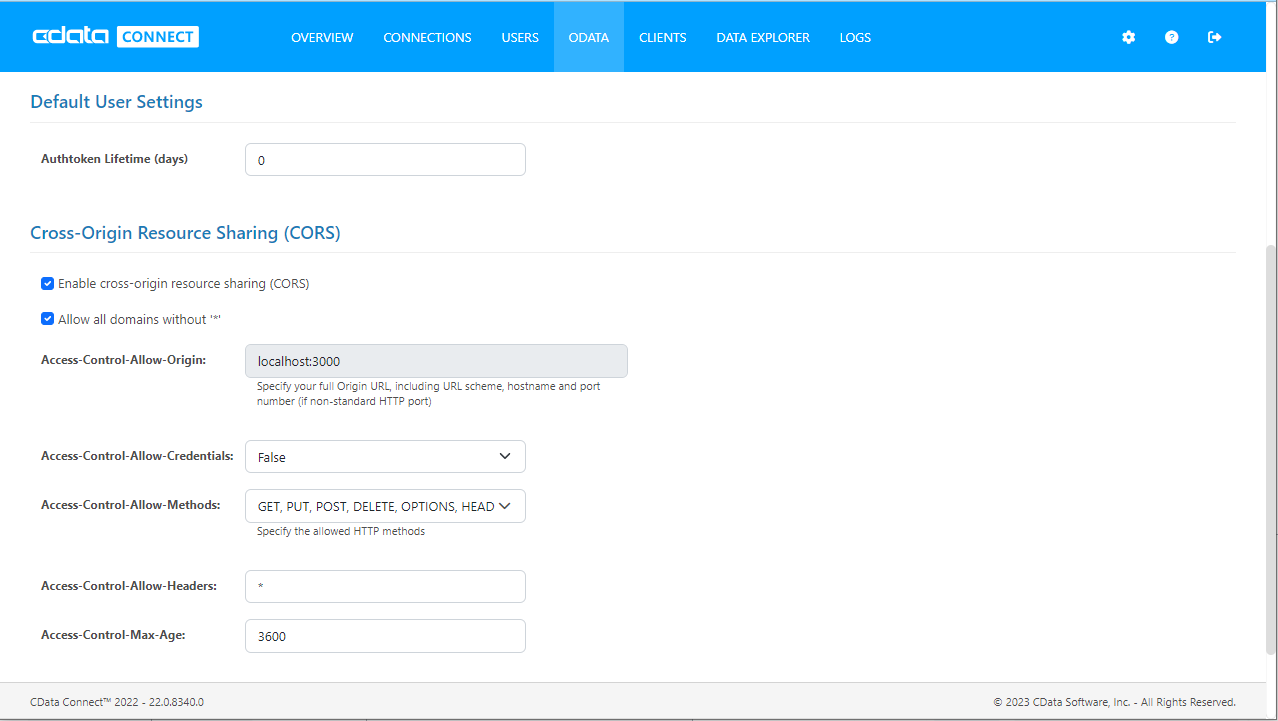
Connect to FTP Data as an External Data Source
Follow the steps below to connect to the feed produced by the API Server.
- Log into Salesforce and click Setup -> Integrations -> External Data Sources.
- Click New External Data Source.
- Enter values for the following properties:
- External Data Source: Enter a label to be used in list views and reports.
- Name: Enter a unique identifier.
- Type: Select the option "Salesforce Connect: OData 4.0".
URL: Enter the URL to the OData endpoint of the API Server. The format of the OData URL is CONNECT_SERVER_URL/api.rsc/
- Select the Writable External Objects option.
Select JSON in the Format menu.
- In the Authentication section, set the following properties:
- Identity Type: If all members of your organization will use the same credentials to access the API Server, select "Named Principal". If the members of your organization will connect with their own credentials, select "Per User".
- Authentication Protocol: Select Password Authentication to use basic authentication.
- Certificate: Enter or browse to the certificate to be used to encrypt and authenticate communications from Salesforce to your server.
- Username: Enter the username for a user known to CData Connect Server.
- Password: Enter the user's authtoken.
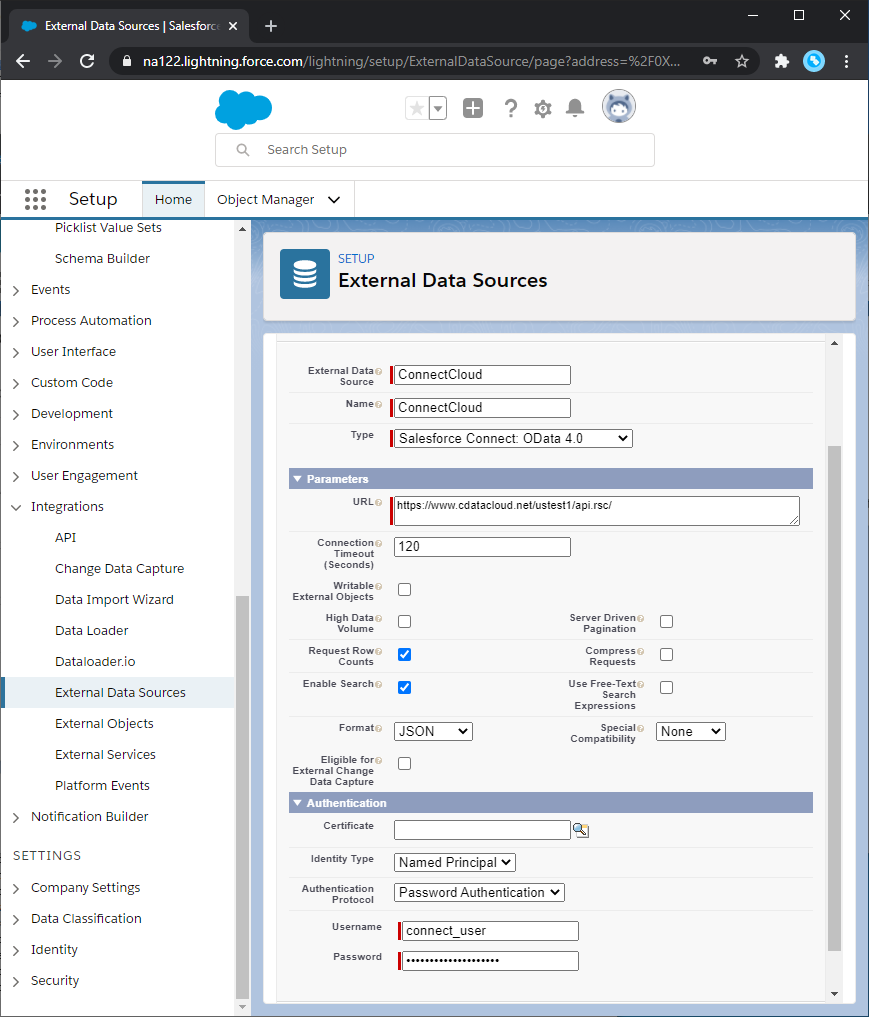
Synchronize FTP Objects
After you have created the external data source, follow the steps below to create FTP external objects that reflect any changes in the data source. You will synchronize the definitions for the FTP external objects with the definitions for FTP tables.
- Click the link for the external data source you created.
- Click Validate and Sync.
- Select the FTP tables you want to work with as external objects.
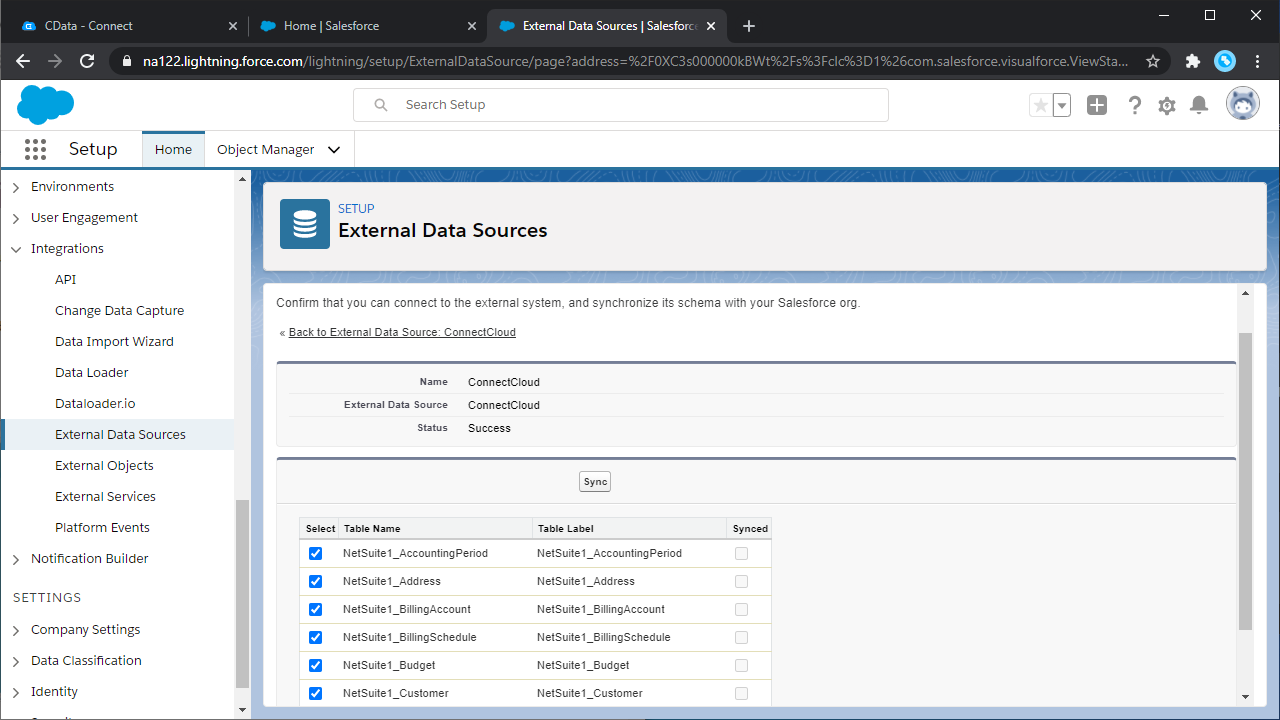
Access FTP Data as Salesforce Objects
After adding FTP data as an external data source and syncing FTP tables as external objects, you can use the external FTP objects just as you would standard Salesforce objects.
-
Create a new tab with a filter list view:
![Viewing external objects from Salesforce (NetSuite is shown)]()
-
Create reports of external objects:
![Reporting on external objects from Salesforce (NetSuite is shown)]()
-
Create, update, and delete FTP objects from the Salesforce dashboard:
![Editing external objects from Salesforce (NetSuite is shown)]()
Simplified Access to FTP Data from Applications
At this point, you have a direct connection to live FTP data from Salesforce. For more information on gaining simplified access to data from more than 100 SaaS, Big Data, and NoSQL sources in applications like Salesforce, refer to our Connect Server page.



